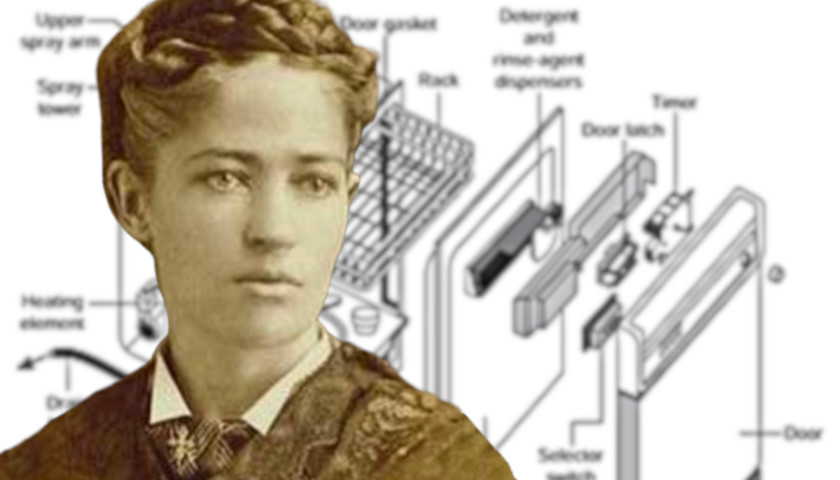Josephine Cochrane, born March 8, 1839, was born in Ohio but spent most of her adult life living in Shelbyville, Illinois as the wife of a wealthy politician named William Cochran. Josephine spelled her name with an “e” at the end to give it some extra pizzazz.
Cochrane came from a line of successful engineers and inventors. Her great grandfather, John Fitch, was known for his improvements to the steamboat and ran a steamboat service between Philadelphia and Trenton. Her father, John Garis, was a civil engineer who helped “build the city that was old Chicago,” according to University of Houston historian John H. Lienhard.
She had the creative gene, but it wasn’t put to use until she was 44, when her husband suddenly died and she was left with a pile of financial debt. She also lost her husband’s political influence, which would have proved beneficial in promoting her inventions.
As a socialite, Cochrane frequently hosted dinner parties at her home and observed that the fine china she used for meals was chipping and cracking from hand washing. At first, she thought this might be due to the carelessness of her servants, so she tried to wash the dishes herself. She discovered how tedious and messy the task was and figured there must be an easier way.
After her husband’s death, she devoted herself to inventing the dishwasher and began working on the first prototypes in a shed behind her house. Others had attempted to invent similar devices, but none were successful enough for commercial use.
Working in her garage, Cochrane “measured the dishes and constructed wire compartments to fit plates, cups, and saucers, and placed these inside a wheel that laid flat within a copper boiler.”
“The wheel turned, powered by a motor, and soapy water would squirt up over the dishes to clean them,” the Massachusetts Institute of Technology says of Cochrane.
By 1886, she had completed her dishwasher and patented the device, calling it the “Cochrane Dishwasher.”
“My invention relates to an improvement in machines for washing dishes, in which a continuous stream of either soap-suds or clear hot water is supplied to a crate holding the racks or cages containing the dishes while the crate is rotated so as to bring the greater portion thereof under the action of the water,” Cochrane wrote in her patent.

She was a prize winner for the top invention at the 1893 Chicago World’s Fair and began selling her machines to restaurants and hotels, according to the Encyclopedia of Modern Everyday Inventions. She began advertising the dishwasher in local newspapers and established the Cochran Crescent Washing Machine Company, which eventually became KitchenAid.
The Cochrane dishwasher, however, wasn’t suitable for use in ordinary homes because it was too large and used too much hot water, which household hot water heaters could not supply. It wasn’t until 1949, many years after Cochrane’s death, that KitchenAid introduced the first successful home dishwasher based on Cochrane’s design.
According to the Encyclopedia of Kitchen History, Cochrane’s company attempted to create a “more petite” dishwasher for household use. It stood on four legs and “consisted of a lidded metal tub and racks for holding dishes.” The machine was a disappointment because of its harsh treatment of dishes but also because of the prevailing attitude towards household work at the time. Some housewives admitted that they preferred washing dishes by hand.
It wasn’t until the 1950s that the popularity of the in-home dishwasher skyrocketed. This was due to the “increased availability of hot water in the home, effective dishwashing detergent, and a change in attitudes toward housework,” the National Inventors Hall of Fame states.
Cochrane died from nervous exhaustion in 1913 at the age of 74. Her design for the dishwasher remains the basis of modern dishwashers, one of the country’s most ubiquitous household items.
– – –
Anthony Gockowski is managing editor of Battleground State News, The Ohio Star, and The Minnesota Sun. Follow Anthony on Twitter. Email tips to [email protected].




